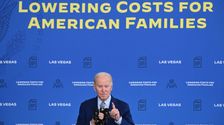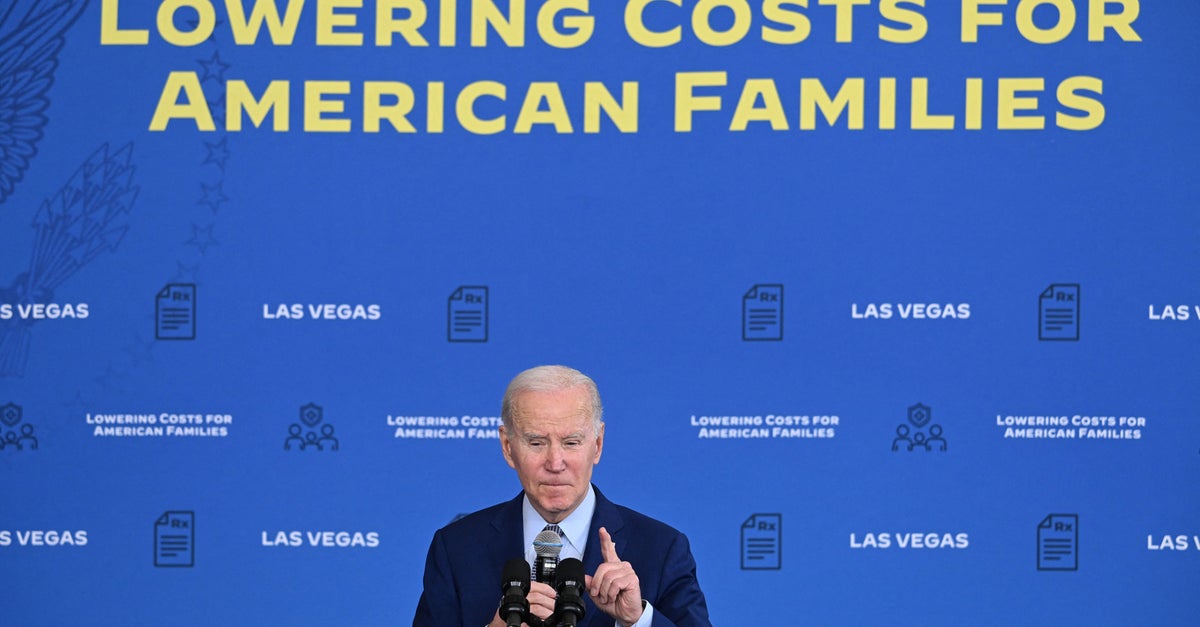
This article is part of HuffPost’s biweekly politics newsletter. Click here to subscribe.
Lots of Americans say they are prepared to vote against President Joe Biden in November. Among the many reasons seems to be a persistent belief that Biden has accomplished “not very much” or “little or nothing” (according to an ABC-Washington Post poll from the summer), or that his policies have actually hurt people (according to a Wall Street Journal poll from last month).
I wonder how many of these Americans know what Biden has done to make health care more affordable ― and, more specifically, what he’s done to bring down the costs of insulin.
Insulin is the life-sustaining drug on which millions of Americans with diabetes depend, in order to process sugars they cannot naturally. And its affordability, or lack thereof, is a case study in the long-standing failures of our health care system. The list price for a month’s supply of the drug can be in the hundreds of dollars, which is five or even 10 times the price in other peer countries. Something like a quarter of all Americans who need insulin have traditionally struggled to pay for it, with serious and sometimes fatal consequences.
One reason is that so many people don’t have health insurance, leaving them exposed to the full price if they can’t find some sort of private assistance program. Fixing that has been a goal of the Democratic Party since the days of Harry Truman, and Biden has done his part to help realize it ― first as President Barack Obama’s wingman in 2009 and 2010 when Democrats were crafting and enacting the Affordable Care Act, and more recently during his own presidency, when he worked with Democrats to make the law’s financial assistance more generous.
The number of Americans without insurance is now at its lowest level ever. Just this week, the administration announced that a record 20 million Americans had signed up for private coverage through the ACA’s online marketplaces. As Biden famously said back in 2010, when Obama signed the law, that’s a pretty big fucking deal ― and seemingly a relevant one for voters in November, given that former President Donald Trump keeps telling people he would try, once again, to repeal the law if he gets another term.
I suspect most Americans do grasp that Biden supports and wants to strengthen “Obamacare,” while his likely opponent ― i.e., Trump, currently the GOP front-runner ― still wants to get rid of it. But most Americans seem unaware that Biden and the Democrats have also been working to make insulin cheaper, through a pair of changes that are already taking effect.
The first of these arrived as part of the Inflation Reduction Act, the sweeping 2022 climate and health care legislation that included several initiatives to reduce the price of prescription drugs. Among them was a provision guaranteeing that Medicare beneficiaries ― that is, seniors and people with disabilities ― could get insulin for just $35 a month.
The provision took effect a year ago and, at the time, the administration estimated that something like 1.5 million seniors stood to save money from it. Indeed, there’s already evidence that fewer seniors are rationing their own insulin in order to save money. But as of August, polling from the health research organization KFF found that just 24% of Americans knew the $35 cap existed.
Many people who need insulin aren’t on Medicare, of course. But now, non-Medicare patients also have access to cheaper insulin, thanks to the way another policy implementation has played out.
As of Jan. 1, the three companies that dominate the market (Eli Lilly, Novo Nordisk and Sanofi) have all lowered prices and made some of their products available to non-elderly, non-disabled Americans for the same $35 a month that Medicare beneficiaries now pay. The companies announced these changes last year, presenting them as a voluntary action to show they want to make sure customers can get lifesaving drugs.
But by nearly all accounts, it was primarily a reaction to an obscure policy change in Medicaid, the joint federal-state program for low-income people. The effect of the tweak was to penalize drug companies financially if they had been raising commercial prices too quickly.
“This is a smart PR move and to some extent a response to market pressure… but drug companies are not lowering insulin prices to be generous,” KFF executive vice president Larry Levitt told me in an email. “They’re lowering prices to avoid paying rebates to Medicaid programs and therefore maximize profits.”
This change in policy was tucked into the American Rescue Plan, the COVID-19 relief act that Biden and the Democrats passed in 2021. The idea had been kicking around for years, endorsed by members of think tanks and government commissions who saw it as a smart way to reduce government spending. (Cheaper drugs mean lower costs for Medicaid, which means less federal and state spending.)
“It was very attractive… because it produced significant federal and state savings that could be used as an offset,” Edwin Park, a Georgetown University research professor who was among those promoting the idea back in 2019, told me this week.
The idea was so sensible that it had bipartisan support: The Trump administration actually proposed a version in 2018. But the Medicaid change still didn’t become law, which perhaps wasn’t surprising. When Trump and the Republicans were in charge, they couldn’t actually pass major legislation on prescription drug policy ― or virtually any major legislation, for that matter.
But Democrats did, first with the American Rescue Plan and later with the Inflation Reduction Act. In other words, Biden and the Democrats not only recognized some effective, widely popular ways to make prescription drugs more affordable, but they had the legislative skill and the political commitment to turn these ideas into reality.
“There were so many stories that we heard before, where people were spending hundreds of dollars out of pocket every month for insulin, and they couldn’t afford that,” said Lovisa Gustafsson, vice president at the Commonwealth Fund, a health care research organization. “There’s a lot of different people, and a lot of different levels of people, who are going to be benefiting from this.”
The catch is that, as with so much of what Democrats have done over the past three years, they haven’t gotten much credit for it. The Medicaid penalty provision has received almost no attention at all outside of the health care trade press (David Dayen of The American Prospect was one of the few political writers to highlight it), and the newly reduced prices for insulin aren’t attracting much notice either (with the exception of a New Year’s story by CNN’s Tami Luhby).
These new policies, like any, come with real tradeoffs and committed detractors, including some Republicans who say the new Medicaid policy’s effects are leading to some drug shortages. But that’s also a reminder of why initiatives by Biden and the Democrats to reduce insulin prices should be on the minds of voters come November.
If Democrats lose and the Republicans get control of government again, those initiatives could get rolled back or wiped off the books. That could have all sorts of real-world consequences, starting with the price of a drug millions of Americans need just to survive.







